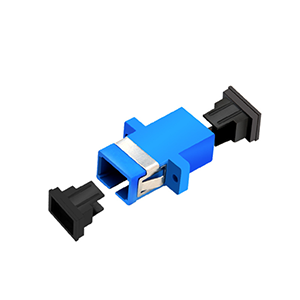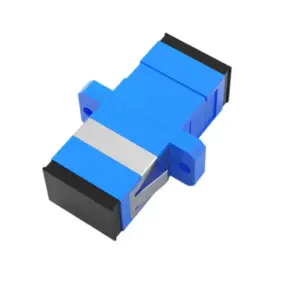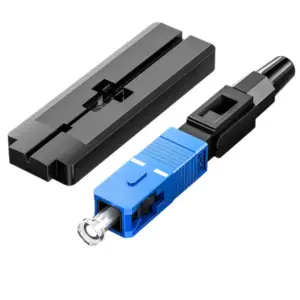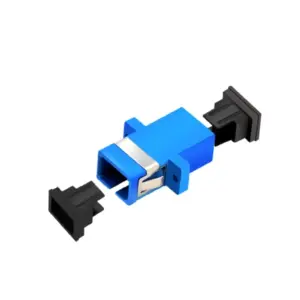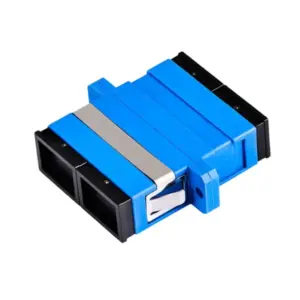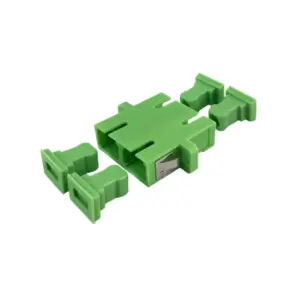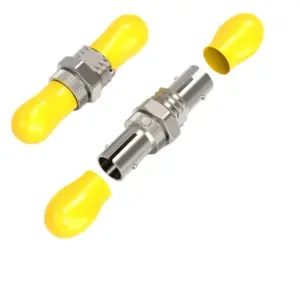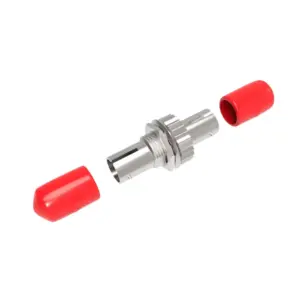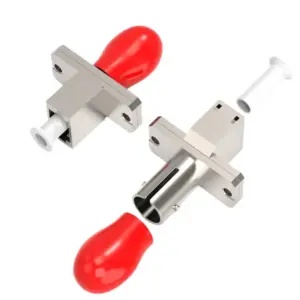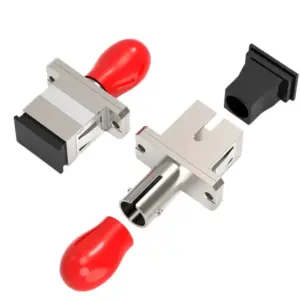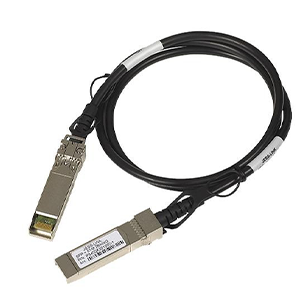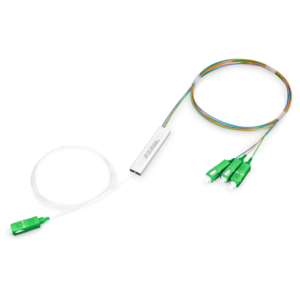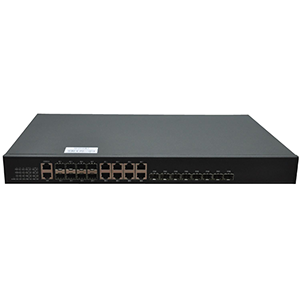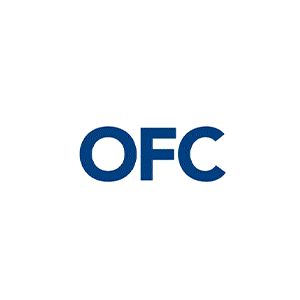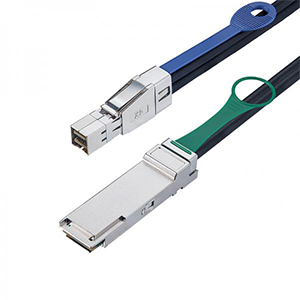Hello everyone! Today I want to share with you a device that plays an important role in the field of optical fiber communications-SC optical fiber connector. As a widely used optical fiber connector, SC connector plays a key role in data transmission. In this article, I will take you to have an in-depth understanding of the design, characteristics and application scenarios of the SC connector, so that you can better understand its importance and advantages.
Optical fiber connector overview
Fiber optic connectors are devices used to connect optical fibers and play the role of connecting and disconnecting optical fibers. It is a very important part of the optical fiber communication system and affects the quality and reliability of data transmission.
Basic principle: The basic principle of optical fiber connectors is to enable efficient transmission of optical signals by precisely aligning and fixing the core of the optical fiber. The connector usually contains a ferrule and a sleeve inside. The fiber’s exposed core is inserted into the connector through the ferrule, while the fiber’s protective layer and outer cladding are connected to the ferrule. The connection between ferrule and sleeve is precisely aligned to ensure correct transmission of optical signals.
The importance of optical fiber connectors in data transmission: The quality and performance of optical fiber connectors directly affect the transmission quality and loss of optical signals. A high-quality connector ensures minimal signal loss and maximum signal transmission efficiency. Poor connectors may cause attenuation, reflection, and scattering of optical signals, affecting the performance and reliability of the entire fiber optic system.
Different Types of Fiber Optic Connectors: There are many different types of fiber optic connectors available, some common types include:
- SC (Subscriber Connector) connector: often used to connect single-mode optical fiber and multi-mode optical fiber, and has the characteristics of easy plugging and unplugging.
- LC (Lucent Connector) connector: a miniaturized connector, often used for high-density optical fiber connections.
- ST (Straight Tip) connector: A commonly used connector in the early days, suitable for multi-mode optical fiber connections, but is relatively rarely used now.
- FC connector (Ferrule Connector) : used for single-mode optical fiber connection, using threaded connection, suitable for environments with higher requirements.
Here is a brief introduction to some common fiber optic connector types. Later, we will focus on the SC connector and discuss its structure, working principle and application in detail.
Overview of SC connector design structure
SC (Subscriber Connector) connector is a commonly used optical fiber connector with many design features and structural advantages. The design and structure of the SC connector are introduced in detail below:
Design features:
Convenient plugging and unplugging: SC connector adopts a simple push-in connection method, and the optical fiber is connected and disconnected by inserting and withdrawing. This design makes plugging and unplugging operations more convenient and faster.
Precise alignment: SC connectors use a pair of precisely aligned ceramic or stainless steel ferrules to ensure accurate alignment of the fiber. This design can minimize the loss and reflection of optical signals and provide stable signal transmission performance.
Small footprint: SC connectors are relatively small and suitable for high-density fiber optic connection applications. Its appearance and dimensions are similar to the RJ-45 Ethernet connector, making installation and wiring in network equipment more convenient.
Structural composition:
External structure: The outside of the SC connector usually consists of a rectangular plug and a connector shell. The plug usually has a tab with a grab handle to facilitate insertion and extraction of the connector. The connector housing has a receptacle with a groove to receive the plug.
Internal components:
- Ferrule: The ferrule of the SC connector is the most important part inside the connector. It is usually made of ceramic or stainless steel and has holes for precise fiber alignment. The exposed core of the optical fiber is inserted into the connector through the ferrule to ensure alignment and docking with other optical fibers.
- Sleeve (Adapter): The sleeve of the SC connector is a component within the connector housing and is used to fix and protect the protective layer and outer cladding of the optical fiber. The alignment and docking of the sleeve and ferrule is very important to ensure effective transmission of optical signals.
Reliability, stability and ease of use:
SC connectors are known for their reliability, stability and ease of use. Its precisely aligned design and structure ensure high-quality signal transmission with reduced losses and reflections. The plugging and unplugging operation is simple and does not require additional tools, making installation and maintenance more convenient and faster.
Due to its excellent performance and wide range of applications, SC connectors are widely used in many fields, including data communications, telecommunications, LAN and WAN, etc.
Overview of SC connector features and advantages
As a commonly used optical fiber connector, the SC connector has many unique features and advantages. Compared with other types of connectors, it shows obvious advantages in some aspects:
Low insertion loss: The ferrule design of the SC connector is very precise, ensuring accurate alignment between fibers. This design enables the SC connector to have low insertion loss, that is, the transmission loss of the optical signal during the connection process is very small, thus ensuring high-quality signal transmission.
High reflection loss performance: The contact surface between the ferrule and sleeve of the SC connector is very flat, which can effectively reduce the reflection of optical signals. This design enables the SC connector to have high reflection loss performance, which can reduce the reflection of optical signals and reduce signal interference and loss.
High reliability and stability: The push-in connection design of the SC connector makes the plugging and unplugging operation more convenient and stable. The connector’s structure is sturdy and durable and can withstand long-term and frequent plugging and unplugging operations without being easily damaged. This makes SC connectors highly reliable and stable, maintaining good performance in a variety of environments and applications.
Long-distance transmission applications: Because the SC connector has low insertion loss and high reflection loss performance, it performs well in long-distance transmission. Whether it is single-mode fiber or multi-mode fiber, SC connectors can provide stable signal transmission and are suitable for fiber transmission that needs to span longer distances.
High-speed network applications: With the improvement of network speed, SC connectors have also adapted to the needs of high-speed networks. It can support high-speed data transmission, such as Gigabit Ethernet and high-speed transmission standards in optical fiber communications. Its low insertion loss and high reflection loss performance enable data to be transmitted at high speed and high quality.
In summary, SC connectors are widely used in the field of optical fiber communications due to their low insertion loss, high reflection loss and stable performance. It is suitable for long-distance transmission and high-speed networks, and can provide reliable signal transmission and high-quality data communication.
Overview of SC connector application scenarios
SC connectors are widely used in optical fiber communication systems in various fields. Here are some application cases of SC connectors in different application scenarios:
Data centers: In data centers, high-speed data transmission and low insertion loss are key requirements. SC connectors are widely used in fiber optic interconnections and network equipment connections in data centers, and are used to connect servers, storage devices, network switches, etc. Its stable performance and high-speed transmission capabilities enable data centers to achieve fast and reliable data communications.
Telecom network: In the field of telecommunications, SC connectors are widely used in the deployment and maintenance of optical fiber communication networks. It can connect optical cables and optical fiber equipment and is used for optical fiber access, aggregation and distribution. Because SC connectors have stable performance and high-quality signal transmission, they play an important role in telecommunications networks, ensuring the reliability and efficiency of communications.
Broadcasting and television: In the radio and television industry, SC connectors are often used in optical fiber transmission systems for the transmission and distribution of audio and video signals. It can connect cameras, mixers, audio and video equipment and transmission equipment to achieve high-quality audio and video signal transmission. The stability and reliability of SC connectors enable the broadcast and television industry to achieve high-definition and high-fidelity signal transmission.
Optical fiber network expansion: In fiber optic network expansion, SC connectors are widely used in applications such as fiber extension and fiber access network (Fiber to the X, FTTx). It can connect optical fiber cables and optical fiber terminal equipment to realize the transmission and distribution of optical signals. The high-quality transmission and stability of SC connectors enable fiber optic networks to expand to farther areas and provide wider network coverage.
High-bandwidth transmission: Because the SC connector has low insertion loss and high reflection loss performance, it has important applications in the field of high-bandwidth transmission. For example, SC connectors are commonly used in high-speed transmission standards in Gigabit Ethernet, 10 Gigabit Ethernet, and fiber optic communications. It can support high-speed data transmission requirements and ensure fast and reliable data transmission.
In general, SC connectors are widely used in data centers, telecommunications, radio and television, and fiber optic network expansion and other fields. Its stable performance, low insertion loss and high reflection loss make SC connectors an important part of optical fiber communication systems, achieving high-quality, high-speed data transmission.
Summary
SC fiber optic connector, as a key fiber optic communication equipment, shows outstanding performance in various fields with its unique design and advantages. Its reliability, stability and ease of use make it the first choice in data centers, telecommunications and broadcast television. Whether you are building a new fiber optic network or upgrading existing network infrastructure, SC Connectors can provide you with high-quality connections and high-speed data transmission.
We offer many types of SC connectors to meet various needs and application scenarios. If you have more questions about SC connectors or need more details, please feel free to contact us. Let us work together to build an efficient and reliable optical fiber network to meet the growing demand for data transmission!
SC Connector FAQ
In the context of the SC connector used in fiber optics, “SC” stands for “Subscriber Connector”.
An SC connector features a square-shaped snap-in design with a push-pull coupling mechanism. It has a ceramic ferrule at the end to align and protect the fiber cores.
SC connectors offer easy and quick installation due to their push-pull coupling mechanism. They provide good repeatability, low insertion loss, and excellent mechanical stability, making them suitable for various applications.
SC connectors are commonly used in applications such as telecommunications networks, data centers, local area networks (LANs), and fiber optic distribution frames.
SC connectors are compatible with both single-mode and multimode fibers. The connector type (SC) is independent of the fiber type.
Yes, SC connectors can be field-installed using specialized termination kits and tools. However, achieving high-quality terminations may require expertise and experience in fiber optic termination.
SC connectors can be mated with other SC connectors, providing a secure connection between two SC-terminated fiber optic cables. They can also be mated with other connector types using appropriate adapters.
Yes, SC connectors are available in both simplex and duplex configurations. Simplex connectors have one fiber, while duplex connectors have two fibers in a single connector body.
SC connectors are commonly color-coded with a blue boot, but color coding can vary depending on specific applications or industry standards. The boot color helps in identifying the connector type or fiber polarity.

